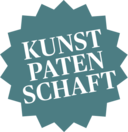Harnisch: Fußturnierharnisch
um 1600, Owner: vielleicht Erzherzog Ferdinand II. von Innerösterreich, Sohn des Erzh. Karl II. von Habsburg Österreich, ab 1619 Kaiser Ferdinand II.
Fußturnierharnisch
This armour was designed for a type of foot combat that became very popular in the late Renaissance and the early Baroque. Opponents faced each other across a barrier and, armed with swords or pikes, exchanged a predetermined number of blows. This type of tournament could be held both out in the open or indoors. A combatant aimed solely at his opponent’s head (or rather his helmet), trying to splinter a thin lance or land a blow with his sword. This made leg armour obsolete, unlike earlier types of foot combat where the participants had faced each other in a cordoned-off arena (see inv. A 474b).
Other parts of the body were given extra protection – here, for example, the crook of the arms, which was technically quite challenging. The bottom edge of the close helmet has a hollow roping to rotate over the gorget-plate and can only be moved along this edge; this ensured that the opponent’s sword could not accidentally slide under the helmet. The visor, too, was reinforced as it received the majority of the blows.
The entire surface of the armour is covered with damascene work in gold and silver; the decoration comprises a net of quatrefoil windows with garlands, trophies, and medallions featuring knights and ladies. It bears the mark of the anonymous Master I.O. on both breastplate and backplate.
The armour was probably made for Archduke (later Emperor) Ferdinand II, perhaps in connection with the festivities marking his marriage to Maria Anna of Bavaria celebrated in April 1600 at Graz.
Object data
Object Name
Harnisch
Culture
Mailand
Dated
um 1600
Owner
Artist
Meister I. O. (um 1600 - 1610, tätig in Mailand)
Material
Eisen, geschmiedet, getrieben, teils gebläut, teils graviert, teils punziert, teils vergoldet, teils mit Silber und Gold tauschiert. Schrauben, Rosetten, Riemenzungen: Eisen, teils mit Gold tauschiert. Muttern, Nietkappen: Eisen, vergoldet. Leder. Textil (Seidensamt).
Dimensions
H. 110 cm, B. 65 cm
Gesamtgewicht exkl. Sockel, exkl. Figurine: 17,95 kg
Markings
oben mittig auf der Brust und Rücken: rechteckige Marke mit Turm, daneben die Initialen I O
Image rights
Kunsthistorisches Museum Wien, Hofjagd- und Rüstkammer
Inv. No.
Hofjagd- und Rüstkammer, A 1712
Permalink (citable Link) to this page: www.khm.at/it/object/372108/
Kunst & Patenschaft
This object is still without a Art Patron. Accept the patronage and make sure that this cultural treasure is preserved for future generations.
Your donation is a direct and sustainable contribution to the scientific documentation, research, restoration, and presentation of the artworks of the Kunsthistorisches Museum Wien.

